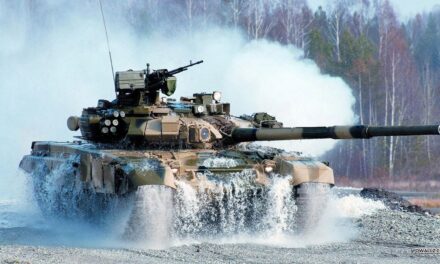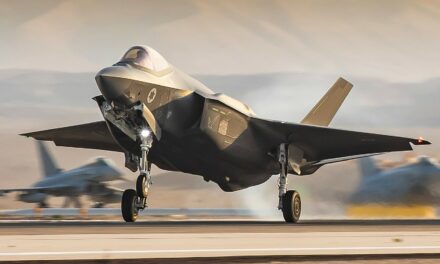We support our Publishers and Content Creators. You can view this story on their website by CLICKING HERE.
Russia’s Kilo-class and Yasen-class submarines are likely considered as a massive, high-tech threat by the Pentagon while China’s growing fleet of Jin-class ballistic missile submarines are acquiring much longer-range JL-3 nuclear missiles.
That does not mean either Russian or Chinese boats are the best in the world. Does the U.S. Navy still have global undersea superiority?
The Navy’s Virginia-Class: The Best Submarine of All Time
While many details about foreign submarines remain murky, the U.S. Navy’s cutting-edge Virginia-class attack submarines are arguably the best to ever exist.
The submarines incorporate a series of paradigm-changing undersea technologies, computing, and firepower, which could very well place them in a class by themselves. This is particularly true when one considers innovations woven into Block III and forward Virginia-class submarines and massive firepower increases built into the Block V Virginia Payload Modules.
In a variety of operational environments, surface ships and the drones or aircraft they operate could be more “detectable” to enemy radar and sensors when compared to attack submarines. Given these and other variables, Virginia-class submarines are becoming increasingly critical to clandestine “intel” missions in high-risk areas.
Enhancements to Virginia-class submarines, first built into a prototype Block III boat called the USS South Dakota, became operational almost eight years ago. However, in a broad or general sense, Senior Navy weapons developers did say the enhancements related to antennas, coating material, and engine-quieting technologies.
Virginia-class vs Kilo-class Submarines
Block III Virginias also have a Large Aperture Bow advanced sonar and an automated, joystick-controlled computerized fly-by-wire navigation system. Russia’s Kilo-class is described as having some computer automation, yet it seems it would be quite significant to determine the extent to which it can truly rival cutting-edge Virginia-class submarines.
This is of particular tactical significance because advanced Virginia-class submarines are increasingly being used for Intelligence, Surveillance, Reconnaissance (ISR) missions to survey high-risk areas such as enemy coastlines while remaining much less detectable than easy-to-see surface ships.
Virginia-Class submarines are engineered with “Fly-by-Wire” capability, which allows the ship to quietly linger in shallow waters without having to surface or have each small move controlled by a human operator. With this technology, a human operator will order depth and speed, allowing software to direct the movement of the planes and rudder to maintain course and depth. The ships can be driven primarily through software code and electronics, thus freeing up time and energy for an operator, who does not need to manually control each small maneuver.
Attack Submarines As “Intel” “Spy” Submarines
This technology, using upgradeable software and fast-growing AI applications, widen the mission envelope for attack submarines by vastly expanding their ISR potential. Using real-time analytics and an instant ability to draw upon and organize vast databases of information and sensor input, computer algorithms can now perform a range of procedural functions historically performed by humans. This can increase the speed of maneuverability and an attack submarine’s ability to quickly shift course, change speed, or alter depth positioning when faced with an attack.
“The most important feature for maneuvering in littoral waters is the fly-by-wire control system, whereby computers in the control center electronically adjust the submarine’s control surfaces, a significant improvement from the hydraulic systems used in the Los Angeles-class,” a 2016 Stanford University, “The Future of Nuclear Submarines” paper by Alexander Yachanin states.
The U.S. Navy’s 2018 “Commander’s Intent for the United States Submarine Force,” says “We are uniquely capable of, and often best employed in, stealthy, clandestine and independent operations … we exploit the advantages of undersea concealment which allow us to: Conduct undetected operations such as strategic deterrent patrols, intelligence collection, Special Operations Forces support, non-provocative transits, and repositioning.”
Virginia-class subs are armed with Tomahawk missiles, torpedoes, and other weapons able to perform a range of missions; these include anti-submarine warfare, strike warfare, covert mine warfare, ISR (Intelligence, Surveillance, Reconnaissance), anti-surface/ship warfare, and naval special warfare, something described as having the ability to carry and insert Special Operations Forces. Future Virginia-Class submarines provide improved littoral (coastal waters) capabilities, sensors, special operations force employment, and strike warfare capabilities.
About the Author: Kris Osborn
Kris Osborn is the Military Affairs Editor of 19FortyFive and President of Warrior Maven – Center for Military Modernization. Osborn previously served at the Pentagon as a Highly Qualified Expert with the Office of the Assistant Secretary of the Army—Acquisition, Logistics & Technology. Osborn has also worked as an anchor and on-air military specialist at national TV networks. He has appeared as a guest military expert on Fox News, MSNBC, The Military Channel, and The History Channel. He also has a Master’s Degree in Comparative Literature from Columbia University.

 Conservative
Conservative  Search
Search Trending
Trending Current News
Current News 





